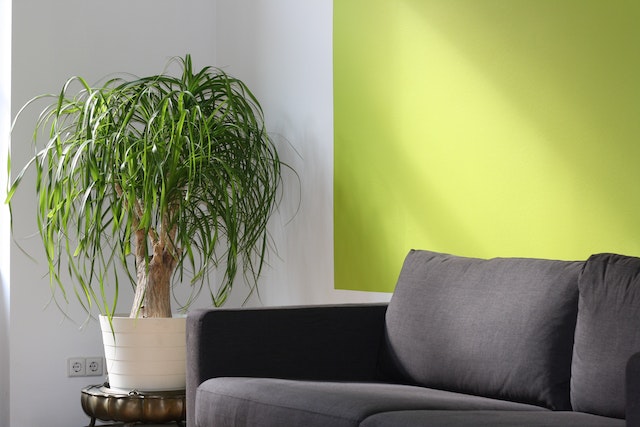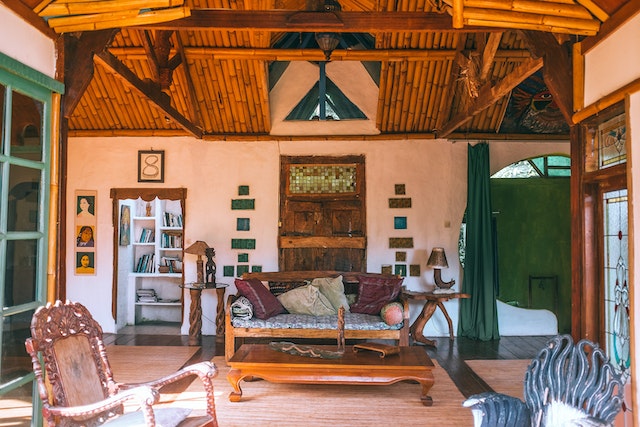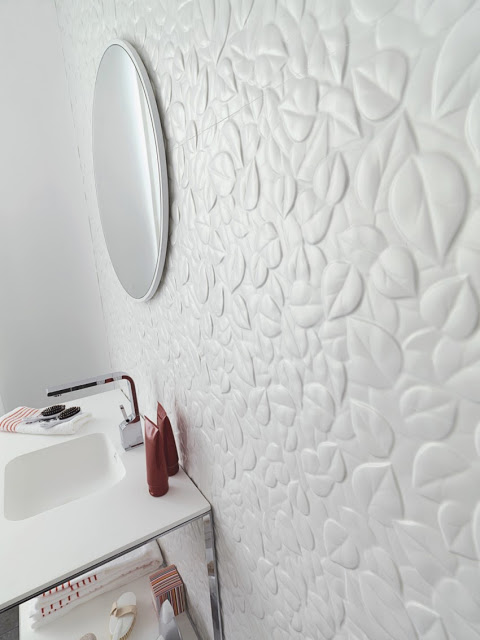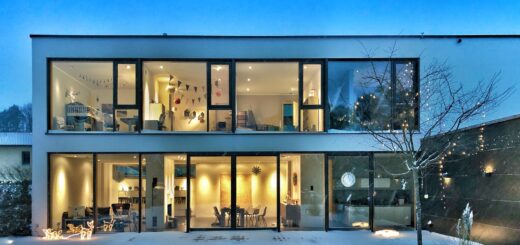How to Bring Nature into Your Home with Biophilic Design
Welcome to the green world of home with biophilic design! As you embark on this exciting journey of home ownership, consider incorporating some biophilic elements into your design. This approach, rooted in our inherent connection to nature, is a wonderful way to infuse your personality into your first home. By incorporating elements like sunlight, plant life, and natural materials, you’ll create a peaceful and rejuvenating environment, enhance your well-being, and strengthen your bond with the natural world.
Bring Nature into Your Home with Biophilic Design
The concept comes from the Greek words “bio” (life) and “philia” (love). Thus, biophilic design taps into humanity’s innate love for nature and our instinctive bond with living systems. It’s more than just adding plants to your home; it’s a philosophy that aims to build a deep, symbiotic relationship between humans and their living environments. This design combines natural light, organic materials, and varying textures to mirror the harmony and tranquility of natural settings within our personal spaces.

When you bring nature into your home with biophilic design, you’re not just elevating the aesthetic appeal of your space but also infusing it with powerful positive energy. This innovative design approach has a host of benefits. It can reduce stress, improve cognitive function, and enhance your mood, effectively transforming your home into a sanctuary of well-being. Furthermore, it can promote better sleep, boost productivity, and even improve air quality. So, ready to bring positive energy into your home? Here are some steps to incorporate biophilic elements into your home.
Incorporation of Natural Light
Natural light is a key component of biophilic design. Allow sunlight to flood your living spaces through windows, skylights, or glass doors as much as possible. That can illuminate your home beautifully and help regulate your body’s circadian rhythm, enhance your mood, and increase productivity. Use sheer curtains or adjustable blinds to control the light and heat entering your home.
Use of Natural Materials and Textures
This design celebrates the richness and diversity of nature’s palette. Use wood, stone, and bamboo in your furniture, flooring, and decor. That introduces different textures and patterns that mimic those found in nature, thus enhancing the sensory engagement in your home. These elements can provide warmth and earthiness to your interior spaces.

Indoor Plants for Green Space
Nothing embodies biophilic design quite like plants. From potted plants to vertical gardens, greenery can greatly enhance the liveliness of your home. Plants not only purify the air but also act as natural mood boosters. Remember, variety in plant types and sizes can create a more vibrant and engaging indoor landscape. Now, if you’re moving or need to store some belongings temporarily, find help to ensure that your plants and other design elements are handled carefully. Professional Movers Canada advises using self-storage for items incompatible with a plant-filled home, creating more room for your green oasis.
Views and Vistas
If your home layout allows it, arrange your space to take advantage of views of nature. Window views overlooking gardens, trees, or cityscapes can provide visual relaxation. If direct views of nature aren’t possible, artwork or photographs featuring natural landscapes can be effective alternatives.
Water Elements
Incorporating water elements into your home can create a calming, serene environment. It can be as simple as a tabletop fountain, an aquarium, or a wall-mounted water feature. The sound of flowing water can mask city noises, helping to create a peaceful sanctuary within your urban dwelling.
Natural Patterns and Forms
Emphasize the use of patterns and forms that echo those found in nature. You can achieve this by selecting artwork, rugs, cushions, and other decor items. Incorporating organic, irregular shapes found in nature can bring a sense of authenticity and depth to your interior spaces, further enhancing the biophilic connection.
Choosing the Right Plants for Your Home
Choosing the right plants for your home goes beyond aesthetic appeal; it’s about understanding your home’s light and temperature conditions. Some plants, like snake plants and pothos, thrive in low-light conditions, making them perfect for dimly lit rooms. On the other hand, succulents and cacti prefer bright, sunny spots. Similarly, tropical plants need warmer temperatures, while others, like ferns, can handle cooler conditions. Always research a plant’s specific care requirements before bringing it home to ensure it’s a good fit for your environment and can flourish healthily.

Creative Ideas for Using Biophilic Design Elements
This design brings together creativity and the beauty of nature in numerous ways. One of the simplest yet impactful ways is to use plants in your home decor. From installing natural wall art, such as framed botanical prints or wood mosaics, to creating indoor gardens, plants can enhance your connection to nature. Tiered plant stands or hanging pots can create a lush, green haven, even in the smallest spaces. Living walls or vertical gardens take this idea a step further, offering a visually striking statement and acting as natural air purifiers and humidity controllers.
The Challenges and Solutions
While this design brings numerous benefits, it can also present certain maintenance challenges. For instance, keeping indoor plants healthy requires attention and care. To overcome these, choose low-maintenance plants if you’re a beginner or have a busy lifestyle. Similarly, natural materials may need special care to maintain their aesthetics and longevity. Embrace solutions like using durable finishes for wood and stone, and consider artificial alternatives that mimic natural textures. With thoughtful planning, sustainable biophilic design can be a joyful and rewarding experience.
Conclusion
Bringing nature into your home with biophilic design enhances your living space with elements that nurture a connection to the natural world. The opportunities are endless, from incorporating natural light and materials to creative plant use and water elements. So, embrace your innate love for nature, experiment with these design elements, and create a home that truly reflects the tranquility and harmony of the outdoors.





Recent Comments